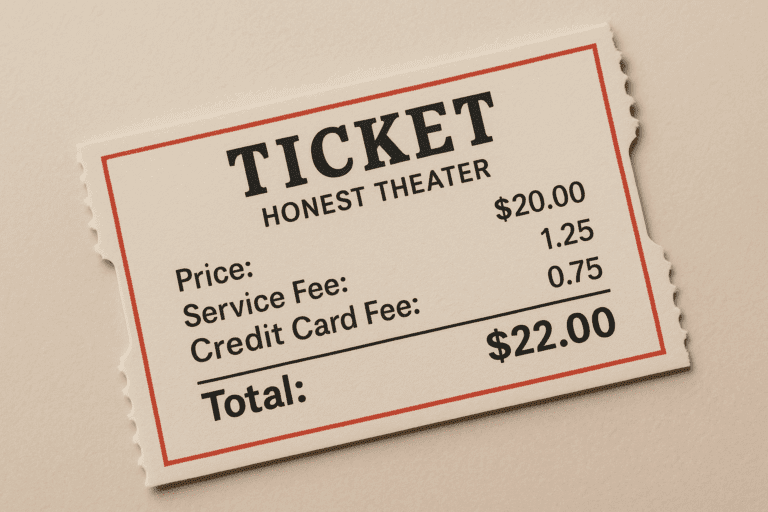
When it comes to selling tickets online, few decisions affect your sales—and your audience’s trust—more than how you handle ticketing fees.
Recent consumer protection laws aimed at eliminating junk fees now require ticketing platforms to show all costs upfront, not just at checkout. That’s good news for ticket buyers—and even better news for venues using ThunderTix. We’ve always believed that clarity builds trust and that you should be the one who decides what’s fair.
Here’s what to consider when deciding whether (and how) to apply ticket fees.
Charging a small per-ticket fee can meaningfully increase your venue’s profitability—especially if you keep 100% of the fee. ThunderTix doesn’t take a cut of your ticket sales, and that’s extremely rare in the industry. Whether you add a $1 fee or a $5 fee, it all goes directly to your bottom line.
But here’s the key: you’re in control.
Some venues choose not to add a fee at all, betting on increased attendance and fan goodwill. Others apply a modest fee that patrons are happy to pay in exchange for a clear, upfront experience. Either way, it’s your decision—not your ticketing vendor’s.
Fee sensitivity varies dramatically by audience.
Serving a younger, budget-conscious crowd? Low or no fees can boost advance sales.
Located in a high-income or tourist-heavy market? Reasonable fees may not impact sales at all.
College towns? Buyers expect fees—but they won’t tolerate sticker shock at checkout.
Since ThunderTix shows all ticket costs and itemized fees right from the start, your audience won’t feel tricked—and they won’t abandon the checkout flow due to surprise charges.
Event dynamics play a big role in fee strategy:
High-demand, sellout shows can typically absorb small fees with no impact on conversions.
Walk-up heavy events or ones with flexible attendance? Lower fees (or none at all) might drive more online sales.
Whether your model relies on early sales or last-minute walkups, ThunderTix gives you the freedom to test and adapt your approach.
Consumer protection agencies have made it clear: the era of hidden fees is over. New regulations require ticketing companies to show total costs—including any added service charges—up front.
With ThunderTix, your patrons see the true cost of a ticket at the very beginning, not buried on the final payment screen. You can show:
The base ticket price
A venue-chosen service fee (optional)
A separate credit card processing fee (also optional)
This level of transparency not only keeps you compliant—it builds trust.
Most ticketing providers set and keep their own fees. You don’t control the amount, where it appears, or who benefits. ThunderTix takes a different approach.
We charge a low monthly subscription that includes your first 20 tickets each month, then just $1 or $1.25 per ticket after that—still without taking a percentage of your ticket sales. That structure means:
You can pass on $1–$1.25 per ticket to fully offset your ThunderTix costs
Add a separate fee to cover credit card processing (if you choose)
Or eliminate fees altogether to boost attendance
This gives you the flexibility to make ThunderTix effectively free for your organization, while still providing a fair and clearly disclosed price to your customers.
Ticket fees don’t have to feel like a scam. With the right software—and the right strategy—they can fund your operations, support your growth, and still respect your audience.
ThunderTix puts that power in your hands.
Want to explore fee strategies that work for your audience?
Contact us or start a free trial to see what’s possible.
Originally published: October 25, 2011.
Updated: July 30, 2025, to reflect current laws on fee transparency and new ThunderTix pricing options.